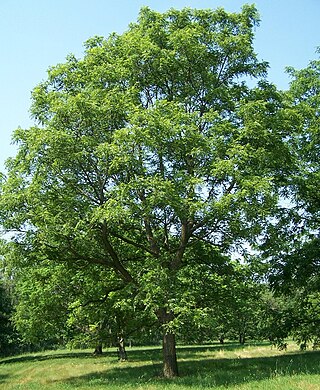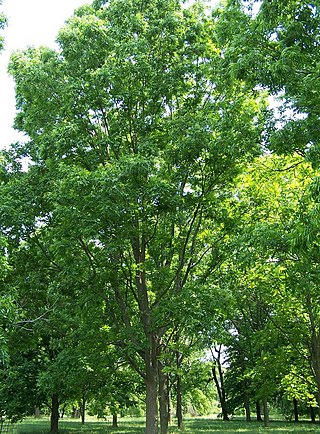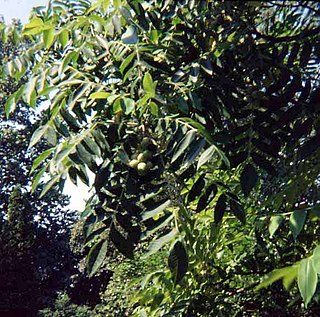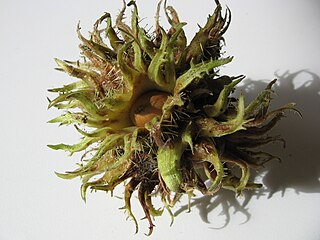Related Research Articles

Walnut Creek is a city in Contra Costa County, California, United States, located in the East Bay region of the San Francisco Bay Area, about 16 miles east of the city of Oakland. Walnut Creek has a total population of 70,127 per the 2020 census, is located at the junction of the highways from Sacramento and San Jose (I-680) and San Francisco/Oakland (SR-24), and is accessible by BART. The city shares its borders with Clayton, Lafayette, Alamo, Pleasant Hill, and Concord.

Stanley Ben Prusiner is an American neurologist and biochemist. He is the director of the Institute for Neurodegenerative Diseases at University of California, San Francisco (UCSF). Prusiner discovered prions, a class of infectious self-reproducing pathogens primarily or solely composed of protein, considered by many as a heretical idea when first proposed. He received the Albert Lasker Award for Basic Medical Research in 1994 and the Nobel Prize in Physiology or Medicine in 1997 for prion research developed by him and his team of experts beginning in the early 1970s.

Walnut trees are any species of tree in the plant genus Juglans, the type genus of the family Juglandaceae, the seeds of which are referred to as walnuts. All species are deciduous trees, 10–40 metres (33–131 ft) tall, with pinnate leaves 200–900 millimetres (7.9–35.4 in), with 5–25 leaflets; the shoots have chambered pith, a character shared with the wingnuts (Pterocarya), but not the hickories (Carya) in the same family.

The pecan is a species of hickory native to the southern United States and northern Mexico in the region of the Mississippi River.

A nut is a fruit consisting of a hard or tough nutshell protecting a kernel which is usually edible. In general usage and in a culinary sense, a wide variety of dry seeds are called nuts, but in a botanical context "nut" implies that the shell does not open to release the seed (indehiscent).

The Juglandaceae are a plant family known as the walnut family. They are trees, or sometimes shrubs, in the order Fagales. Members of this family are native to the Americas, Eurasia, and Southeast Asia.

Juglans nigra, the eastern American black walnut, is a species of deciduous tree in the walnut family, Juglandaceae, native to North America. It grows mostly in riparian zones, from southern Ontario, west to southeast South Dakota, south to Georgia, northern Florida and southwest to central Texas. Wild trees in the upper Ottawa Valley may be an isolated native population or may have derived from planted trees.

Juglans cinerea, commonly known as butternut or white walnut, is a species of walnut native to the eastern United States and southeast Canada.

Juglans ailantifolia, the Japanese walnut, is a species of walnut native to Japan and Sakhalin. It is a deciduous tree growing to 20 m (66 ft) tall, rarely 30 m (98 ft), and 40–80 cm (16–31 in) stem diameter, with light grey bark. The leaves are pinnate, 50–90 cm (20–35 in) long, with 11–17 leaflets, each leaflet 7–16 cm (2.8–6.3 in) long and 3–5 cm (1.2–2.0 in) broad. The whole leaf is downy-pubescent, and a somewhat brighter, yellower green than many other tree leaves. The male flowers are inconspicuous yellow-green catkins produced in spring at the same time as the new leaves appear. The female flowers have pink/ red pistils. The fruit is a nut, produced in bunches of 4–10 together; the nut is spherical, 3–5 cm long and broad, surrounded by a green husk before maturity in mid autumn.
Critical medical anthropology (CMA) is a branch of medical anthropology that blends critical theory and ground-level ethnographic approaches in the consideration of the political economy of health, and the effect of social inequality on people's health. It puts emphasis on the structure of social relationships, rather than purely biomedical factors in analyzing health and accounting for its determinants.
Merrill Singer is a medical anthropologist and professor emeritus in Anthropology at the University of Connecticut and in Community Medicine at the University of Connecticut Health Center. He is best known for his research on substance abuse, HIV/AIDS, syndemics, health disparities, and minority health.

Juglone, also called 5-hydroxy-1,4-naphthalenedione (IUPAC) is an organic compound with the molecular formula C10H6O3. In the food industry, juglone is also known as C.I. Natural Brown 7 and C.I. 75500. It is insoluble in benzene but soluble in dioxane, from which it crystallizes as yellow needles. It is an isomer of lawsone, which is the active dye compound in the henna leaf.
This is a list of articles that are lists of plant diseases.

Coastal Credit Union Music Park is an outdoor amphitheater located in Raleigh, North Carolina, United States, that specializes in hosting large concerts.

Walnut Hills is a neighborhood in Cincinnati, Ohio, United States. One of the city's oldest hilltop neighborhoods, it is a large diverse area on the near east side of Cincinnati. Eden Park is the gateway to Walnut Hills when driving north from downtown, and the University of Cincinnati is less than 10 minutes away. The neighborhood is redeveloping, restoring many of its buildings and introducing new businesses to the area. The population was 6,344 in the 2020 Census.

Thousand cankers disease (TCD) is a recently recognized disease of certain walnuts. The disease results from the combined activity of the walnut twig beetle and a canker producing fungus, Geosmithia morbida. Until July 2010 the disease was only known to the western United States where over the past decade it has been involved in several large scale die-offs of walnut, particularly black walnut, Juglans nigra. However, in late July 2010 a well-established outbreak of the disease was found in the Knoxville, Tennessee, area. This new finding is the first locating it within the native range of its susceptible host, black walnut. In 2013, an outbreak was found in the Veneto region of Italy, where the disease has been found on both black walnut and English walnut.

A walnut is the edible seed of any tree of the genus Juglans, particularly the Persian or English walnut, Juglans regia. The fruits of trees in the family Juglandaceae are often confused with drupes. Still, they are accessory fruit because the outer covering of the fruit is technically an involucre and thus not morphologically part of the carpel; this means it cannot be a drupe but is instead a drupe-like nut.
Pityophthorus juglandis, also known as the walnut twig beetle for feeding on several different species of walnut trees, Juglans, is one of only a few species in the genus Pityophthorus that is associated with hardwoods and the only one associated with feeding on walnut trees.

Husk in botany is the outer shell or coating of a seed. In the United States, the term husk often refers to the leafy outer covering of an ear of maize (corn) as it grows on the plant. Literally, a husk or hull includes the protective outer covering of a seed, fruit, or vegetable.
References
- ↑ Mazzaglia, A. "Bark Cankers on English Walnut: An Emerging Disease". Acta Horticulturae. International Society for Horticultural Science. Archived from the original on 2019-07-09.